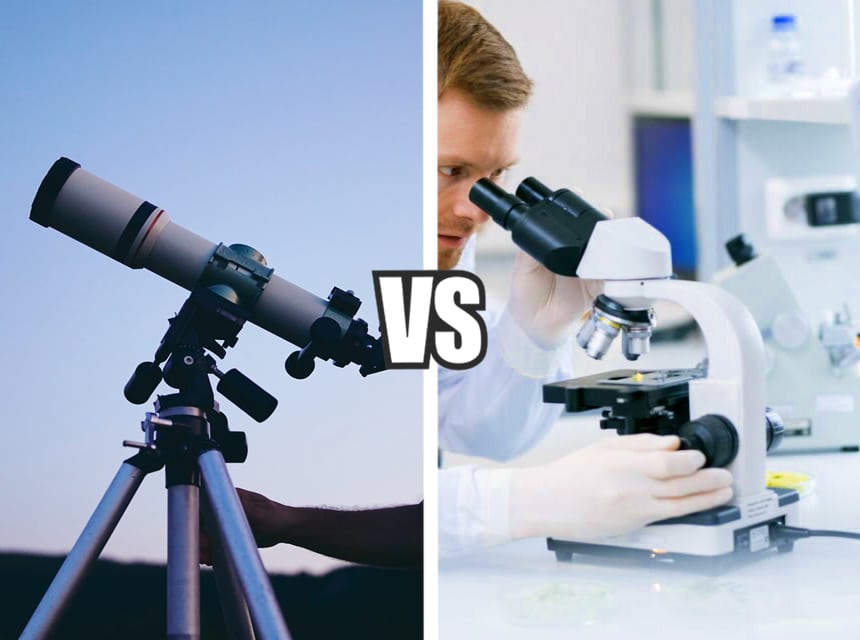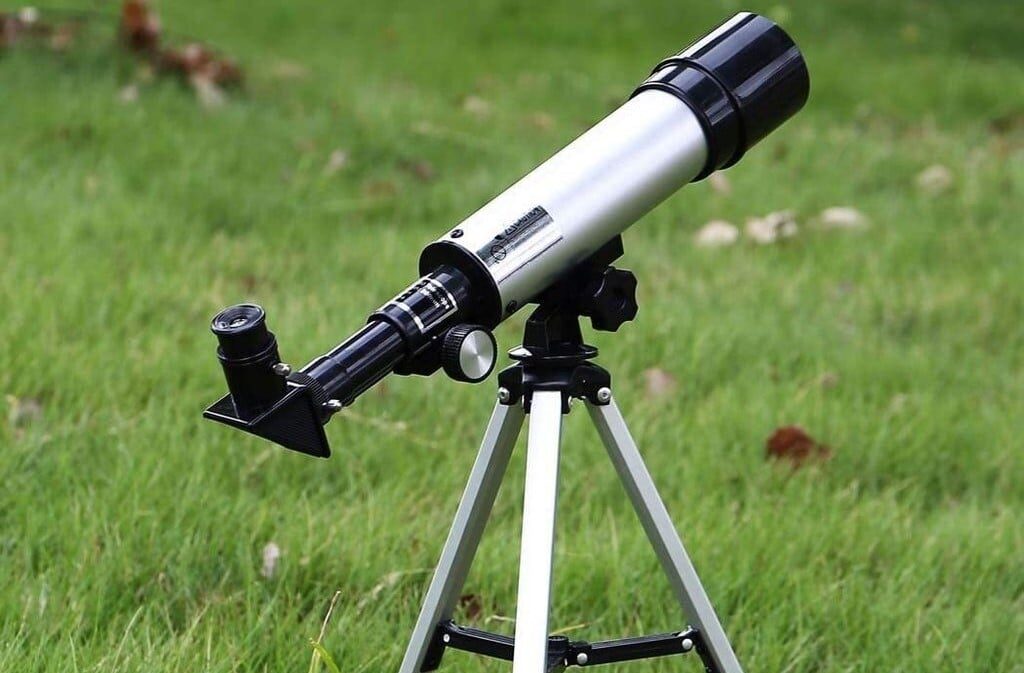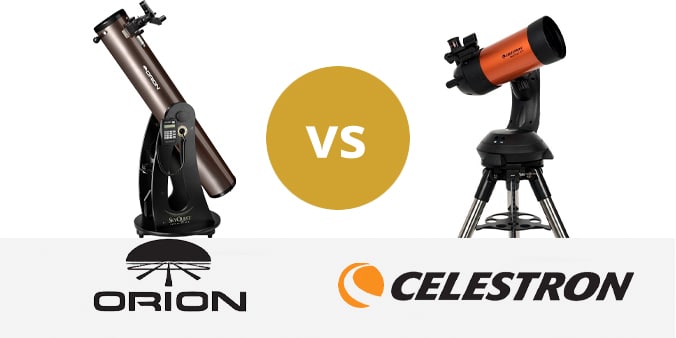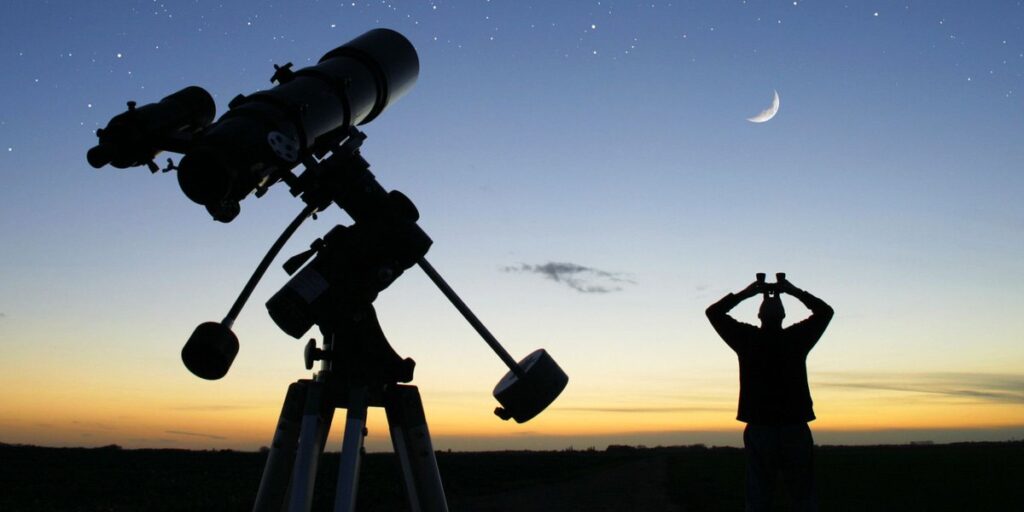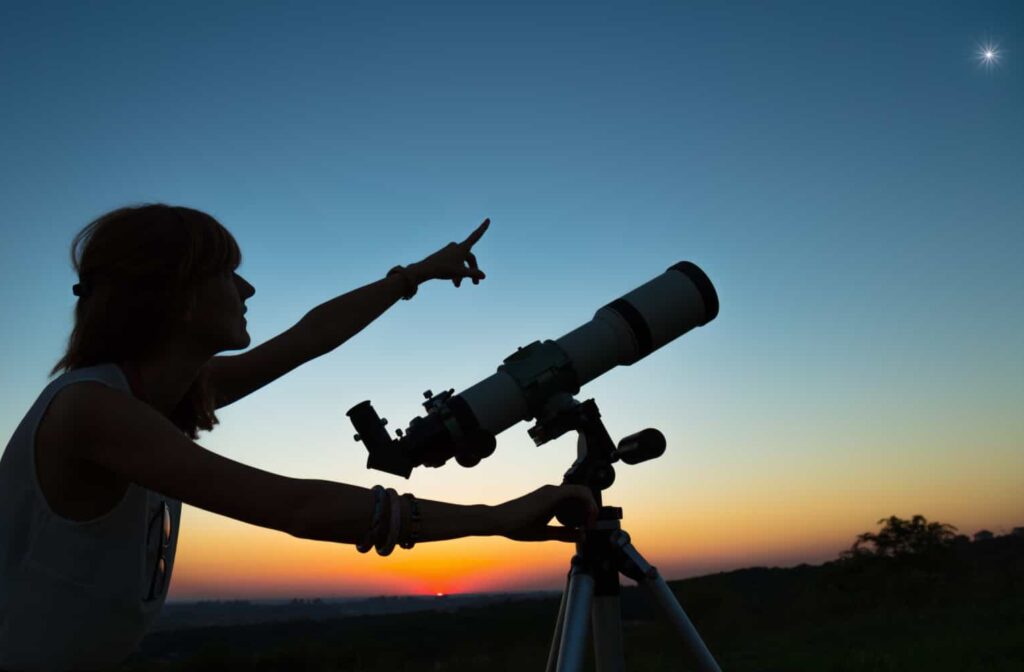

The sky is one of the fascinating views you can get especially when you look at it at night. You will see a lot of stars and satellites that will keep you wondering how they all came into place and how beautiful they look. But that’s just with the naked eyes. Let’s talk about a magnifying object – a telescope. What can you see with a telescope?
We’re swimming in a black sea of stars, satellites, planets, galaxies, nebulae, and a plethora of other interesting cosmic phenomena. While you can see so many things with your naked eye, you’ll get more views with a telescope. However, the quality of things you can see is limited to the type of telescope you use.
So, in this article, we’ll be discussing what you can see through a telescope and more interesting topics. You’ll be glad you read this article when you’re done.
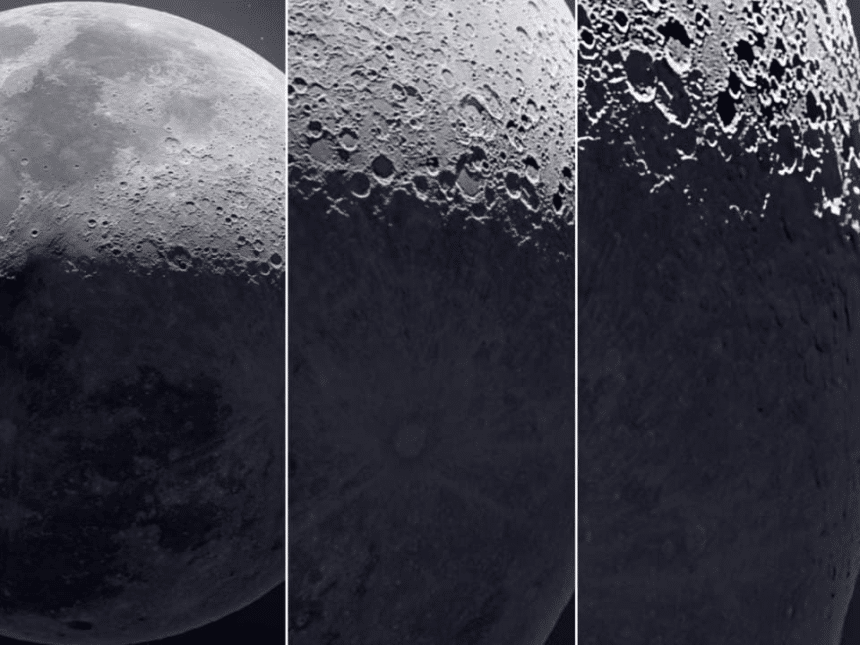 A telescope is a device that gives you a better view of any object, whether it is far away or close. The enhancement of the object does not have to do with the clarity of the object you view through the telescope. All types of telescope, even the cheapest, will zoom in on a distant object as much as you desire, but that does not guarantee that you will see the inner features of the object.
A telescope is a device that gives you a better view of any object, whether it is far away or close. The enhancement of the object does not have to do with the clarity of the object you view through the telescope. All types of telescope, even the cheapest, will zoom in on a distant object as much as you desire, but that does not guarantee that you will see the inner features of the object.
A telescope’s fundamental feature is its resolution – its capability to bring two closely situated details into focus. It can be likened to phone cameras. Though there are cameras attached to every phone, the quality and zoom-in rate are different. Some phones produce low-quality images while others produce high-quality images.
Telescopes work on the same basis. Assume that the telescope is a “camera” that has been implanted inside your eye. For a simple and cheap camera, images would be enhanced, but the more they are magnified, the more faint and blurry the image would look. Whereas, if it’s a decent and costly camera, images would be enhanced more, and as they are being magnified, their quality would still remain the same.
The size of the aperture Trusted Source Aperture | COSMOS The aperture of a telescope is the diameter of the light collecting region, assuming that the light collecting region has a circular geometry. For an optical instrument, the aperture is the diameter of the objective lens (refracting telescope) or the primary mirror (reflecting telescope). astronomy.swin.edu.au is the main parameter of the resolution that would be gotten from a distant object. You shouldn’t magnify the image more than the size of the aperture in millimeters if you want to get a quality view. However, when you use one of the best lenses coupled with good weather, you can increase the magnification up to 1.5-2 times, but it should never be higher than this.
Another parameter of a telescope’s resolution is the optical quality; it’s a broad term that denotes a telescope’s ability to transmit a picture without distortion.
Therefore, before you choose a telescope, make sure it’s suitable. Among all telescopes, astronomers have applauded the design and features of Orion StarSeeker IV and Orion Observer 80ST for their high resolution, portability, and overall performance.
In this article, three types of telescopes will be discussed. The categorization is based on their price, quality, and what you can see with them.
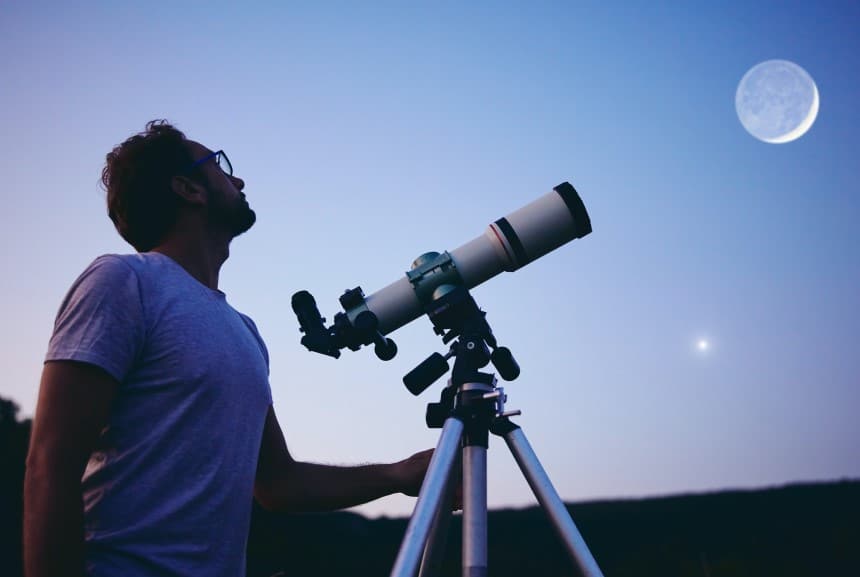 With this price, you can buy a low optical quality telescope that can be used to view the Moon and its features and many of the more giant planets. It will also show objects like Saturn’s rings and some nebulae, but it won’t depict much detail.
With this price, you can buy a low optical quality telescope that can be used to view the Moon and its features and many of the more giant planets. It will also show objects like Saturn’s rings and some nebulae, but it won’t depict much detail.
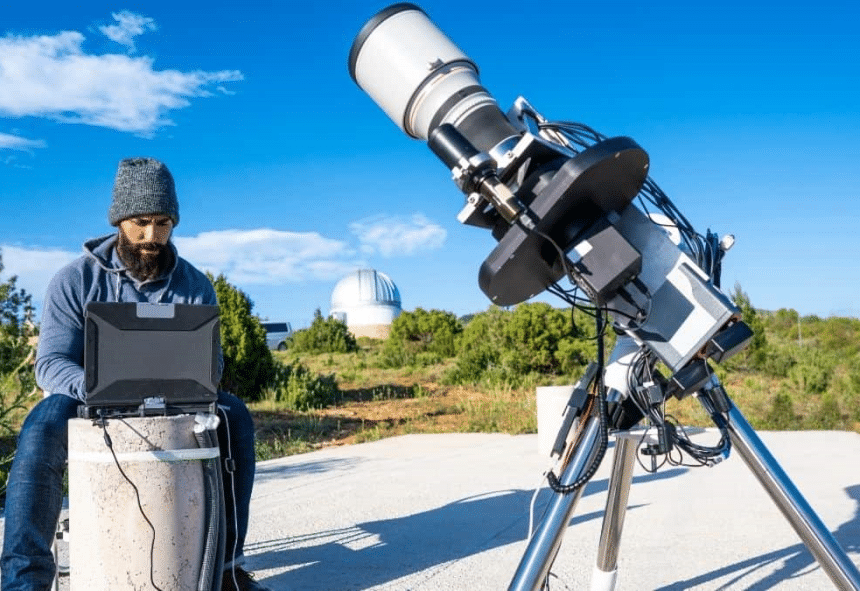 With a medium-class telescope like the Celestron Nexstar 4SE 11049, which is durable, you will get information on several astronomical objects. You would also be able to view many planets in better detail; the features of the Moon will also be more visible. The extra benefit is that with $500, you get to choose from a variety of superb telescopes.
With a medium-class telescope like the Celestron Nexstar 4SE 11049, which is durable, you will get information on several astronomical objects. You would also be able to view many planets in better detail; the features of the Moon will also be more visible. The extra benefit is that with $500, you get to choose from a variety of superb telescopes.
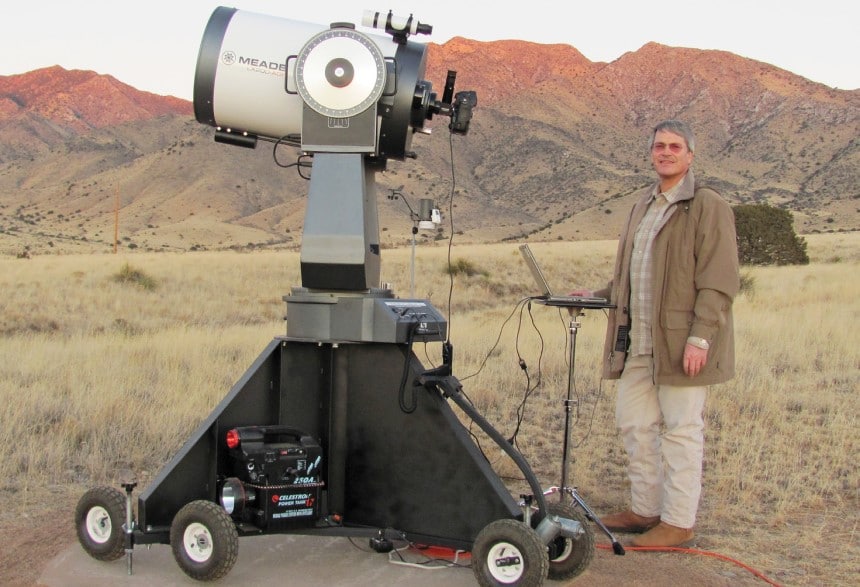 Telescopes of this class have an aperture size of 8 inches (203 millimeters) to 14 inches (355 millimeters). Viewing objects with such a large aperture size will provide a crisper and sharper look. The main difference in the view of telescopes with 8 inches aperture size and 14 inches aperture size is the viewing quality, not the images.
Telescopes of this class have an aperture size of 8 inches (203 millimeters) to 14 inches (355 millimeters). Viewing objects with such a large aperture size will provide a crisper and sharper look. The main difference in the view of telescopes with 8 inches aperture size and 14 inches aperture size is the viewing quality, not the images.
Because of the large-class telescope’s huge aperture size and enhanced ability to capture light very well, it’s simple to view the intricacies of even faint nebulae despite the light pollution in the air.
There are a number of things that affect how your view of images in the sky will be. Quickly, we will consider them.
Before you go on to observe the planets, galaxies, stars, Moon, and every other existing object, it’s critical that you know the technical capabilities of the telescope that will be needed.
The kind of telescope that will be used depends on the type of object to be observed. For example, a small but high-quality 80mm refractor is preferable to a huge 150mm reflector with mediocre optics when you want to watch the Moon, planets, and double stars.
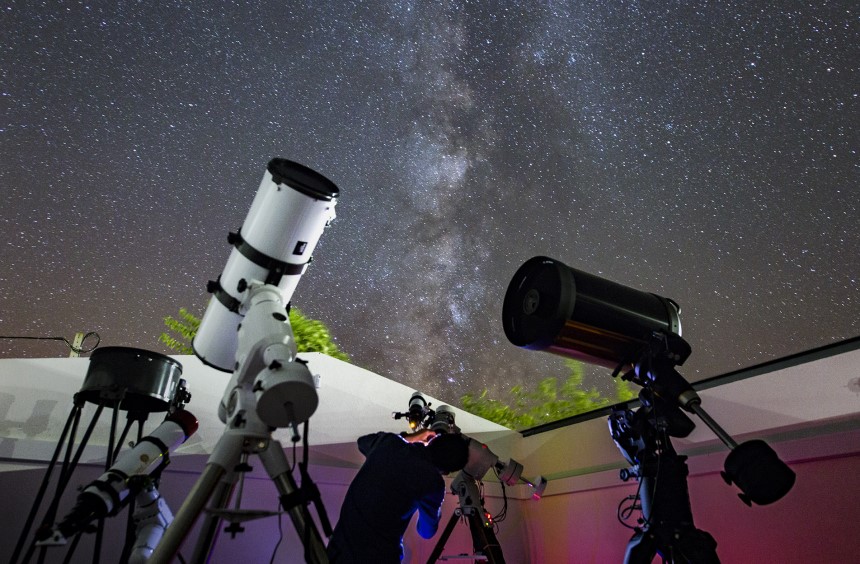
The most appropriate time to view things in the sky is at nighttime when there is total darkness. You might think that more light, like a lamp in a dark room, would show you things better, but it’s not so. Light covers out the dim light of numerous stars in the night sky, making them unnoticed.
Also, time is extremely crucial in astronomy. In this regard, it has been argued that all astronomical observations are one-of-a-kind. This is due to the fact that, while two exposures were taken with the same equipment and showed the same sky field, they were not taken at the same time. Anything could have changed in that field, so the timing determines the result you’ll get.
Another thing to consider for astronomical observation is the site where you want to use the telescope. You must aim to reduce atmospheric distortion by carefully choosing your spot. An important thing to consider is height: there’s less atmosphere to see through at higher grounds, resulting in less refraction of incoming light rays; the air is less turbulent, which ensures that images are not blurry.
Also, if you are an outdoor person or you frequently travel either for recreation or work, you can get a portable travel telescope to see the sky from wherever you are located.
As the Earth spins around the Sun, what you will be able to see at each season will differ. As each year passes, the positions of the stars, galaxies, nebulae, constellations, and other distant objects in the sky will follow a regular seasonal pattern.
Just like how pores in a filter prevent particles from passing through, so also is air to the light of any wavelength. Furthermore, light is absorbed by the molecules that make up air. All these prevent you from seeing details of what you intended to see.
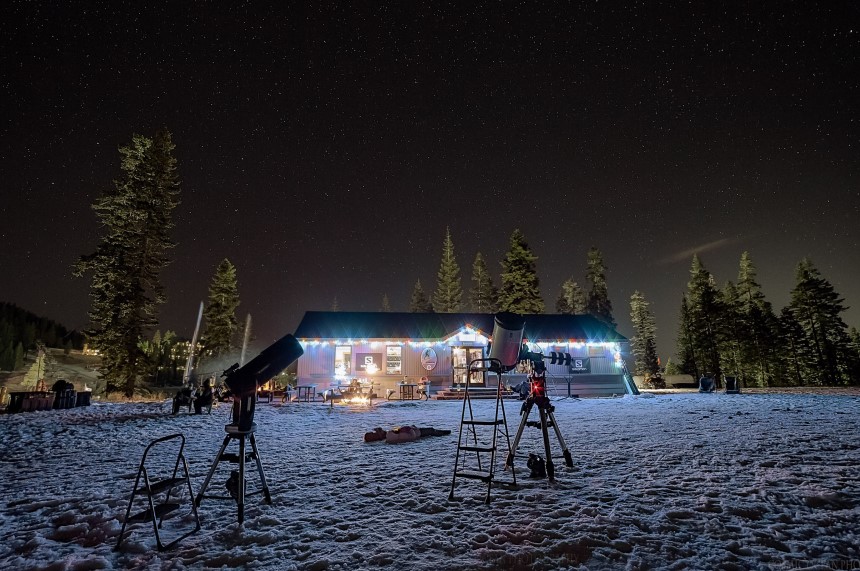
When you see other planets, keep in mind that each one has a unique orbit around the Sun, so what you will be able to see will be different depending on the planet you are on.
People at different ends of the planets can see the same thing at varying periods of the year. The Andromeda galaxy is a perfect example: people can see it at both ends of the equator, but not simultaneously.
However, some objects can only be seen from one end of the planet. Polaris (North Star) can be observed only in the northern hemisphere.
In the remaining part of this article, we’ll be discussing the highlight of a telescope advantage – things to see with a telescope.
Out of all the planets, only a few of them can be seen with a telescope.
This is the largest planet amongst all planets, so you can easily find it. You’ll know that you’ve located it when you observe an orange planet with two belts across its midsection.
Because of its quick spin around its axis, Jupiter, the first planet discovered by ancient astronomers, is slightly flattened. Four Galilean satellites: lo, Europe, Ganymede, and Callisto can also be seen, casting their shadows on this planet as they travel in front of it. However, you might not be able to observe the four of them at once because they are constantly moving around the planet.
Following Jupiter is Saturn, our solar system’s second-largest planet. However, it isn’t easy to view in detail without a large-class telescope because it’s farther away than Jupiter. The best time to observe this planet in the nighttime, as with the other planets, is when it is in opposition, i.e., when it is directly opposite the Sun.
You can also see Saturn’s rings in clear and good weather conditions. This planet consists of the A and B rings and the Cassini Division that separates them. Saturn also contains a large number of moons, but only one of them can be seen. The only notable moon is called the “Titan”, and it can be seen because of its immense size.
The third and last planet that can be observed in our tiny red neighbor – Mars. On it, you would see a lot of surface definitions and intricacies. However, watching it can be a little bit difficult, but there are a few tricks you can perform to ease you off the stress.
Firstly, observe the planet only when it’s in opposition, i.e., when it’s opposite the Sun.
Secondly, use a red light filter. It will block off the green and blue lights that appear while increasing the visibility of the surface definitions and intricacies.
There are a lot of stars in each galaxy, yet they are only visible as tiny white dots. So many people have a good telescope, but they are not using it optimally. For example, a 144mm telescope. You might be also wondering what you can see with a 114mm telescope. Well, it has super-light that can be used to provide excellent views of dark sky objects like galaxies, star clusters, and nebulae. With this type of aperture, you don’t need to use high magnification.
Below are the galaxies that you can see with a telescope.
 It belongs to the Andromeda constellation. There are trillions of stars and other intriguing astronomical objects in the galaxy. It’s the farthest celestial object visible to the eyes (it’s 2.5 million light-years away from our planet!)
It belongs to the Andromeda constellation. There are trillions of stars and other intriguing astronomical objects in the galaxy. It’s the farthest celestial object visible to the eyes (it’s 2.5 million light-years away from our planet!)
The center of the Andromeda galaxy is highly radiant. In the eyepiece, however, it seems faint and dark due to its distance. As a result, finding it can be difficult and irritating for a newbie.
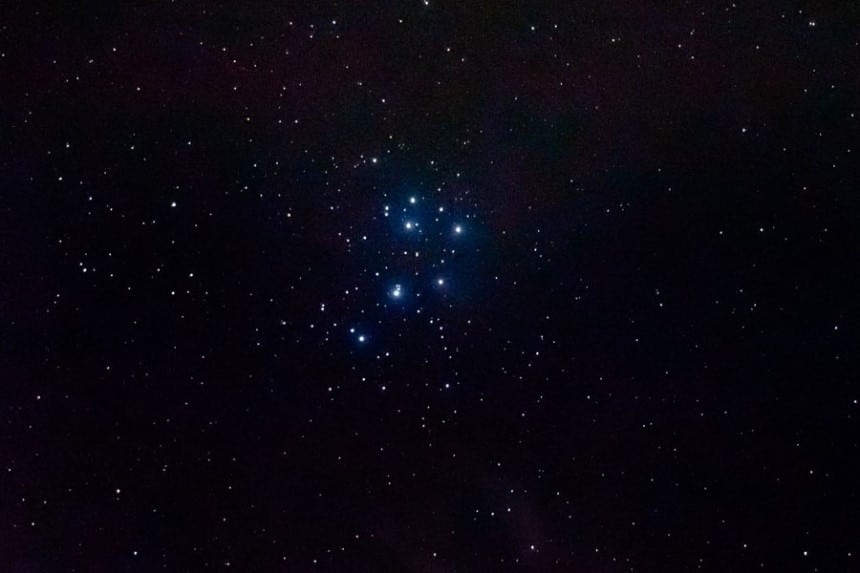 It can be spherical or scattered. All of the stars in the cluster are gravitationally linked and move as one in the galaxy’s gravitational field. If you use a telescope with a lens of 150mm or more in diameter, spherical ones appear as round spots that disintegrate into stars.
It can be spherical or scattered. All of the stars in the cluster are gravitationally linked and move as one in the galaxy’s gravitational field. If you use a telescope with a lens of 150mm or more in diameter, spherical ones appear as round spots that disintegrate into stars.
 The Moon is the most accessible and most impressive observing object. If you wonder what you can see with a home telescope, go outside at night and see the Moon; the view is roughly the same via any telescope at modest modification. A larger, higher-quality telescope, on the other hand, will show you that it is more than a white and black circle. A high-quality telescope will allow you to enhance your view to see a plethora of rills, craters, and mountains.
The Moon is the most accessible and most impressive observing object. If you wonder what you can see with a home telescope, go outside at night and see the Moon; the view is roughly the same via any telescope at modest modification. A larger, higher-quality telescope, on the other hand, will show you that it is more than a white and black circle. A high-quality telescope will allow you to enhance your view to see a plethora of rills, craters, and mountains.
The best time to get the most detail from a moon is when it’s a little more than a quarter, that is when it’s like a waxing crescent. Because of the shadows, you’ll be able to get the optimum light and definition, and you’ll be able to see more detail. In addition, the terminator, which separates the light and dark parts, will generate stunning silhouettes.
Surprisingly, the full Moon is the least favorable to see Moon. A full Moon is exceptionally bright; thus, it’s challenging to notice fine details. Also, you may not want to utilize your telescope’s full magnification level when studying the Moon because it can obscure your view.
Note: Just like the full Moon, don’t use a telescope to look at the Sun. The Sun doesn’t just refuse to show its can details; it damages your eyes.
This section puts a finishing touch to your question: what can I see with a telescope?
Apart from the planets, galaxies, and the Moon, many other things can be seen with a telescope. In this section, we’ll be revealing them.
 You’ll find this nebula near Orion’s sword region, right beneath the belt of Orion. It’s easy to find and a delight to look at because of its unique shape, brightness, and dominance. The four stars at its heart, known as the “Trapezium,” produce spectacular colors after absorbing the gasses surrounding it, giving it its brightness and radiant colors.
You’ll find this nebula near Orion’s sword region, right beneath the belt of Orion. It’s easy to find and a delight to look at because of its unique shape, brightness, and dominance. The four stars at its heart, known as the “Trapezium,” produce spectacular colors after absorbing the gasses surrounding it, giving it its brightness and radiant colors.
The Orion nebula can be seen with the naked eye in the right conditions, but it is undoubtedly a sight to behold via a telescope. To get the best view, look at it in the late fall, winter, or spring.
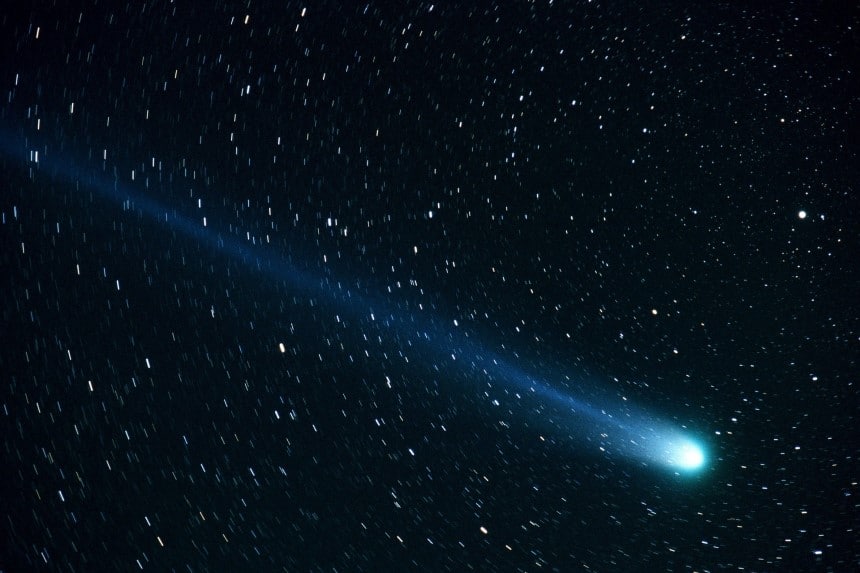 You can only see a comet’s coma (hazy envelope) and a small bright “star” inside at first (nucleus). As comets approach Earth, they grow larger, brighter, and produce spectacular dust and gas tails, and then they become well noticed.
You can only see a comet’s coma (hazy envelope) and a small bright “star” inside at first (nucleus). As comets approach Earth, they grow larger, brighter, and produce spectacular dust and gas tails, and then they become well noticed.
Asteroids are stony objects in the inner solar system that look like simple stars via a telescope. What’s fascinating about them is the way they move in relation to background stars, which may be observed across several hours.
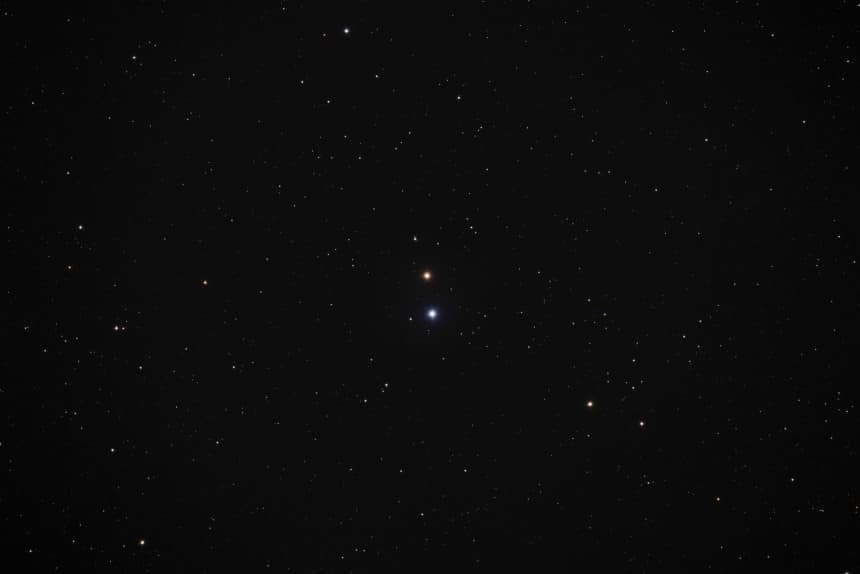 Binary stars are pairs or small groupings of stars. Binary stars are a beauty to behold, although you may not be able to view the stars in great detail. They frequently come in a variety of hues; for instance, one star may be pink while others may be green, purple, orange, etc. Even with a small telescope, you can see these tiny dazzling lights.
Binary stars are pairs or small groupings of stars. Binary stars are a beauty to behold, although you may not be able to view the stars in great detail. They frequently come in a variety of hues; for instance, one star may be pink while others may be green, purple, orange, etc. Even with a small telescope, you can see these tiny dazzling lights.
 Apart from using your telescope for astronomical observations, you can also use it to view objects on Earth. You can use a telescope to observe whatever you want to see that is quite distant; for example, a mansion on a mountain’s peak, a flying drone, the content of a billboard, etc.
Apart from using your telescope for astronomical observations, you can also use it to view objects on Earth. You can use a telescope to observe whatever you want to see that is quite distant; for example, a mansion on a mountain’s peak, a flying drone, the content of a billboard, etc.
However, keep in mind that astronomical telescopes typically provide an inverted image. Thus Earth-based observations will necessitate the use of an additional wrapping prism.
The world, especially the sky, consists of beautiful and intriguing objects that only the naked eyes can’t detail. But with the help of a telescope, more things can be seen. However, the quality of your view is dependent on how good the determining parameters – the aperture and the optical quality of your telescope are.
In this article, we talked about what you can see with a telescope – planets, galaxies, earth-based objects, etc. We also mentioned the things you can see on the Moon, like comets, asteroids, binary stars, and some others. Besides, we discussed the things that you need to consider for astronomical observation – the kind of telescope, specific time, location, seasonality, and planetary position.
Get your telescope and observe the miracles of space!

